
Main Zoom Meeting Link
Your co-teachers
Dr. Kristie Pretti-Frontczak
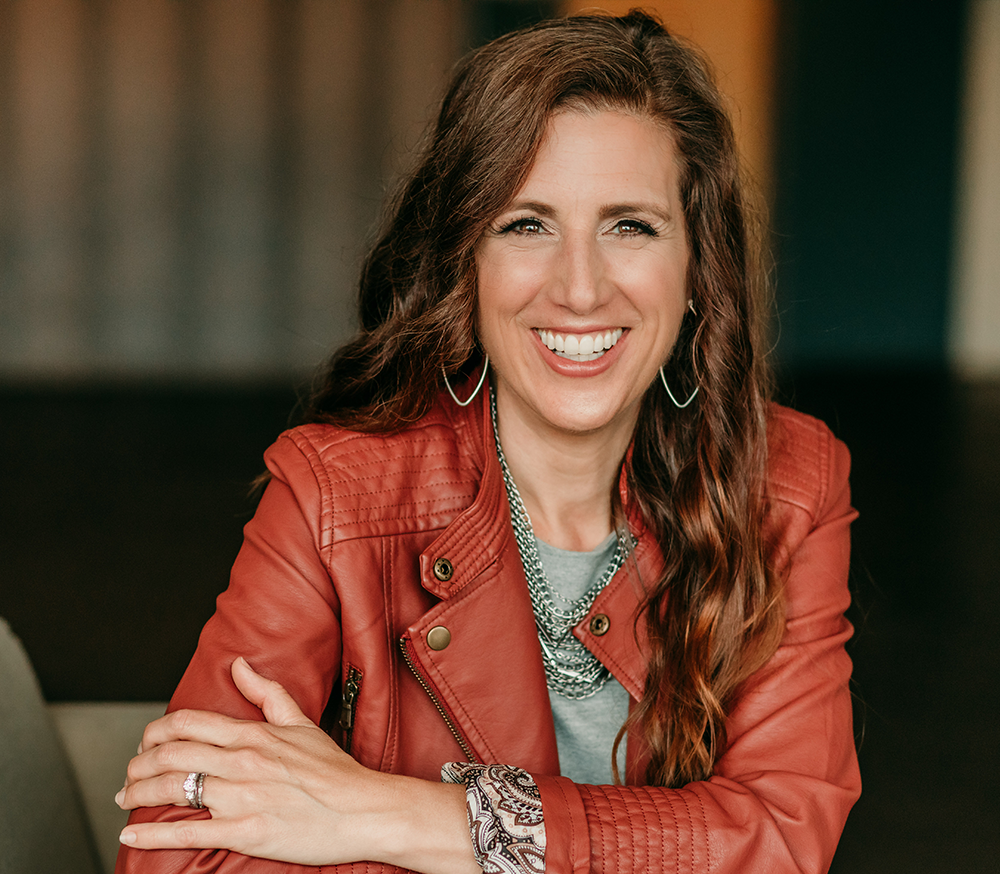
INCLUSION THOUGHT LEADER
EDUCATORS’ EDUCATOR
FIERCE PLAY ADVOCATE
A highly sought-after speaker, accomplished author, and educators’ educator. Dr. Kristie Pretti-Frontczak began her career as an early interventionist and then spent 16 years as a tenured professor at Kent State University. Since 2013 she has followed her true passion for designing and delivering transformative professional development. As a result, she has accumulated over 50,000 hours of helping educators and leaders work from a place of compassion, hope, and love in locations from Cincinnati to Singapore.
Dr. Julie Causton
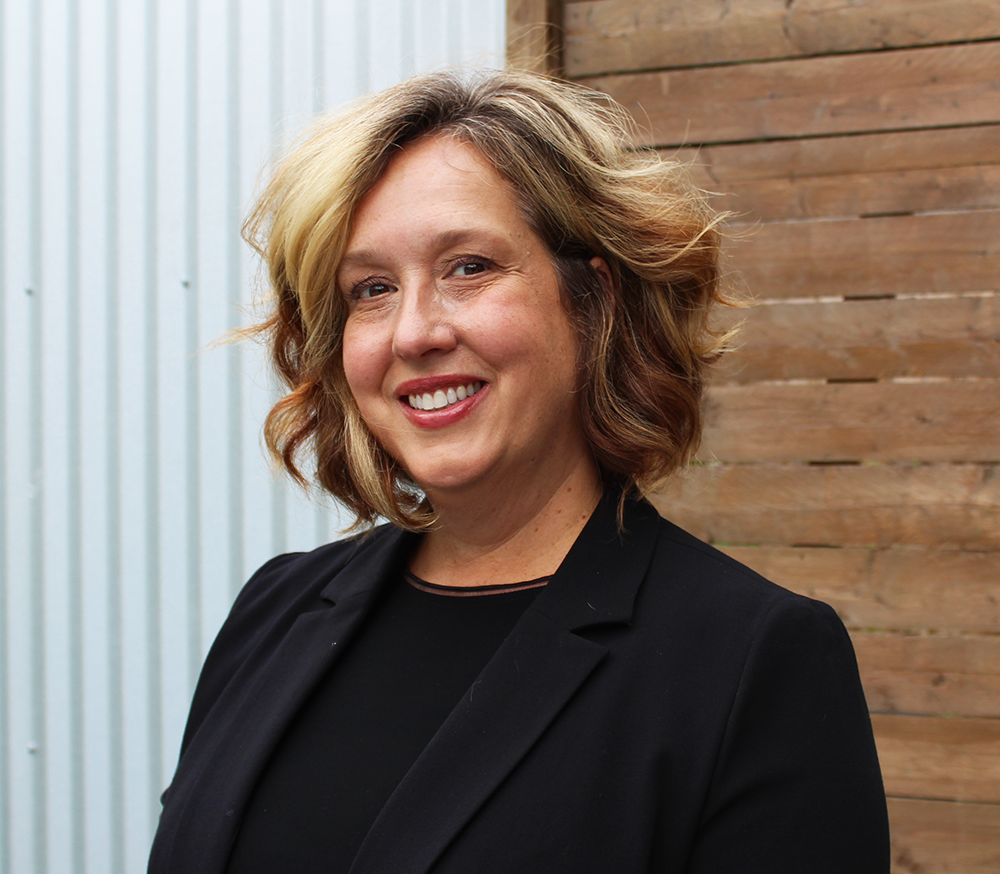
MAGICAL INCLUSION EXPERT
PROLIFIC AUTHOR
KEYNOTE STORYTELLER
A best selling author, inspiring speaker, and inclusion advocate, Dr. Julie Causton began her career as an educator and then 14 years as a tenured professor at Syracuse University. In 2012 she founded Inclusive Schooling, a premiere company solely devoted to delivering professional development which transforms schools and lives. She has spent the past 25 years nearly obsessed with discovering innovative practices and teaching others about inclusive education through her wildly engaging presentations.
Course and Event Portals
Session-by-Session resources
PD 4 Paras Deep Dive and Q&A (click to open and access resources)
Transition to an equity lens [pdf]
Blooms Revised Taxonomy Verbs [link]
Learn how to love paperwork (affirmative vocabulary) [blog] + Download with affirmative vocabulary examples [pdf]
Prompting ladder of support [pdf] and with examples [pdf]; “Ladder within a ladder” – visual support hierarchy [pdf] + Hour long training for paras on using the ladder of support [Viemo]
Zig Zag [blog with embedded links]
100 Ways to Adapt Anything [pdf]
Definition of inclusion [pdf]
Reactive vs. Ready Brains [pdf]
Human Ways of Being [pdf]
What if they run? [video]
BONUS: Leverging the Power of Paraprofessionals
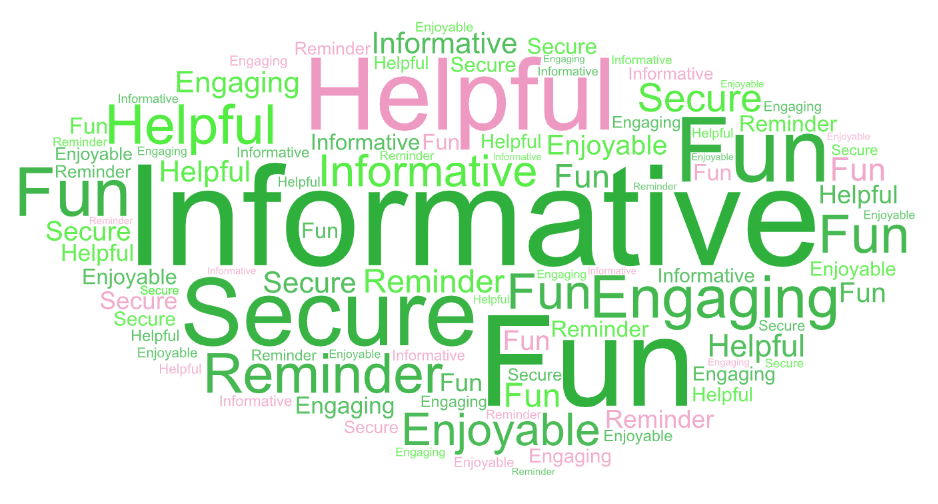
Co-Teaching 2022 Kickoff (click to open and access resources)
Definition of inclusion [pdf]
Transition to an equity lens [pdf]
Research on Inclusion
Co-Teaching Resources
Co-Teaching Models [pdf]
One teach one make multi-sensory [pdf]
9 ways to make any lesson inclusive [pdf]
45 Ways to Group Students [pdf]
Establishing a Union
Guiding Questions [pdf]
Team Building Checklist [pdf]
Roles and Responsibilities
Roles and Resonsibiites Checklist [pdf]
Jaymie Torres Inclusive Educator – EBC and 2nd Grade Focus, McMicken Heights Elementary turned the Roles and Responsibilities handout into a sharable and then editable Doc [Google DRIVE link]
Role Cards [pdf]
Co-Teaching Meeting Dos & Don’t [pdf]
Fostering Strong Relationships
4S’s for Adult-to-Adult Interactions [pdf]
How to Trigger the PEA [pdf]
Supporting Others Through Big Emotions [pdf]
Lifelines for Co-Teachers [pdf]
Five Minute Problem-Solving [blog and handout]
Co-Planning
Lesson Plan Template [pdf] and [Google Doc]
Visual Lesson Plan Template [pdf]
Lesson Plan Completed Example [pdf]\
100 Ways to Adapt Anything [pdf]
Other Resources
Program Planning Matrix [pdf]
Blank templates for embedding schedules/matrixes [DRIVE]
Printable blank embedding schedule/matrix [pdf]
New: From the Therapy Room to the Classroom [blog]
New: 45 Ways to Create Inclusive Groups [pdf]
ASCD article – Ready…Set…Success: A Formula for Leading Schools with Love or [pdf]
Read and watch about how to “rock the range” of learners [blog and video]
Watch this training video on how to bridge skill gaps [video]
Innovative, Virtual and Inclusive Teaching Practices (click to open)
Resources Mentioned or Related to Live Event
- Recorded Session [Vimeo]
- Key PPT slides [pdf]
- Circle Makers Story [link]
- Zoom Makeover Handout [pdf]
- Article on reframing “THAT” child [link]
- The Golden Rule of Providing Support in Inclusive Classrooms: Support Others as You Would Wish to Be Supported [article]
- Blog on how to reframe deficit-oriented words [link]
- Ideas for Triggering the PEA [DRIVE doc]
- Brainstormed ideas from 5 minute problem-solving of how to get more students to participate in ZOOM [pdf]
Download our Back to School Supply List here
- Triggering the PEA [blog]
- Moving from problems to possibilities [blog
- Extending the Green Zone for Adults [blog]
- Extending the Green Zone for Children [blog]
Supports Resources
- Webinar on the 4 S’s [link to register for free] [link to request handouts] – PPT slides
- Harnessing the Power of Showing Up [podcast]
- How to Apply the Four S’s to Autism for Secure Attachments [podcast]
- The 4 S’s Infographics for serving children [pdf]
- Hand model of the brain [video]
- Teach Before the Peak [png]
Technology Skills Resources
- Give your ZOOM room a makeover [pdf]
- Match your “what” with your how [pdf]
- Comparison of different video-conferencing systems by outcome [pdf]
- Lifelines infographic [jpg]
Choices Resources
Shared Responsibility Resources
Gratitude Resources
Fun Resources
- Fun Theory [video]
- The Inspired Educator: 21 days to happier, more engaged, and more connected classrooms [individual purchase] [bulk purchase]
5 minute Problem-solving – Brainstorming Ideas
- Make more obvious when the zoom occurs
- Offer free food
- Extra credit for attendance
- Rewards for those who join the meetings
- Opener
- Reminder calls
- Mare sure your link is public domain
- Incentives/Prizes/Rewards
- Call parents/parent contact
- More meetings/shorter duration
- Emails
- Communication with the greater APW community
- By making zoom mandatory, I had an increase of 300%
- Allude to each zoom meeting at every lesson
- Provide sessions that students want to attend
- Make them more fun
- Bribery
- Call each student and individually invite them to attend
- Text parents
- Dress silly/Dress as a Character
- Change title
- 15 minute repeatable lessons that they can pick and choose from
- Include social time for students to talk with one another
- Interactive sessions
- Sing
- Make sure their basic needs are being met at home
- Make the meets short, sweet and fun.
- Theme weeks
- Have students text their friends on the spot to join
- Shorten the classes
- Make it feel like a podcast
- Call a student for 5 minutes for three weeks to talk about your passion and their interest, then preview what you’ll be teaching, connect the content to their lives.
- By incorporating challenging tech tools, more kids come to my zooms or leave for another zoom and then come back.
- Make a challenge, if a specific number of students show up they pick what happens
- Text them until they show up
- Have a pet parade
- Them a zoom job
- Give them less assignments if they show up
- Incorporate families into the lesson
- Add an alarm
- Ask the students what will help them attend
- Ask the students why they aren’t attending, and then ask again and again
- Team up with a co-teacher to teach a zoom
- Design a bitmoji for each member
- Have guest speakers
- Block their gaming system
- Have them choose a craft
- Let them be the teacher
- Mail a fancy invitation
- Build gaming in to the lesson if that’s what they love
- Invite their favorite people from school to show up and say Hi
- Cash rewards
- Hat day
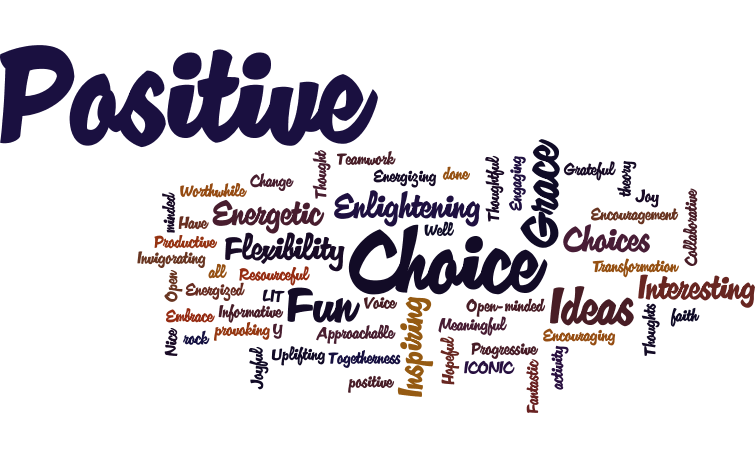
Behaving to Belonging Kickoff & Q&A (click to open)
Session Recording [vimeo]
Handouts
- Stress Detective Checklist (ECE version) [pdf]
- Guide to Reducing Stressors [pdf]
- Teach Before the Peak Infographic [pdf]
- Download the 4 Ss handout with definitions and actions for working with children and adults to ensure they are safe, seen, soothed, and secure. Link to ALL 8 DOWNLOADS
Resources
- Beyond Treats article [pdf]
- List of positive and negative descriptors from Kristin [doc]
- Invitation to Brave Space https://onbeing.org/poetry/invitation-to-brave-space/
- Mindfulness resources, particularly for younger students: https://prekteachandplay.com/using-mindfulness-with-children-of-all-abilities/
- Blog/riff for those who are interested… https://kristiepf.com/how-do-i-change-the-mindset-of-my-staff/
Q&A Handouts
5 Minute Problem-Solving Handout [pdf]
IN WHAT WAYS MIGHT WE CALL OTHERS TO A CULTURE THAT IS MORE WELCOMING AND INCLUSIVE- WITH A FOCUS ON BELONGING.
- District committing to a model/paradigm and offering tailored PD to support the designated model
- showing successes in classrooms
- Financial incentive (because helping kids isn't enough? Sorry, that's petty, but I meant it)
- Pay people every time they do what we want
- Showing out to the community, sharing what we are doing in classes.
- PDs with movies
- Widen their window of tolerance
- See the adult behind the behavior
- create space for hard discussions
- Restory those who are “resistant”
- Engage in generative listening so we understand why they believe the way they do
- have breakfasts where you brainstorm
- Understand why people may be resistant- what is behind that behavior….
- talk about it at faculty meetings
- More contact time with those in charge of paradigms/models
- create real invitations
- Strategic grouping/cohorts to encourage “resistant” folx
- Identify what is a systems level barrier vs. a personal issue
- Recognizing strengths and inviting involvement based on those strengths
- ALWAYS. PUTTING. KIDS. FIRST.
- embed strategies in meetings
- multiple modes of response
- make mandatory training
- Inviting healthy debate amongst dissenters
- `Start with “I really want to work on you with “insert here,” but I know you have another need here? How can we work together to accomplish both our tasks?”
- district faculty meeting- with breakouts for district wide initiatives
- Provide time I faculty meetings to have this discussion
- Creating safe places to talk about connections – coffee and doughnuts, after school snacks, informal
- letters of encouragement to staff as well as students
- Discuss theses issues during the team meetings that occur each grade level
- do a book talk on the book at faculty meeting
- post ideas in hallway or faculty room
SECOND PROBLEM SOLVING SESSION: In what ways might we help students promote belonging without adults support as they manage their own relationships?
- Modeling behaviors from teacher to teacher and from student to teacher; maybe the only time a trickle-down theory can work!
- present this to them and help them solve the problem
- Model it for them……….
- Can’t assume they have these skills…need to teach compassion, perspective taking, problem-solving, acceptance of differences
- listening actively
- Carwash, teach it, practice it, make it extra credit— like the 21 day kindness challenge in the book
- Drawing a hard line at certain behaviors that are unacceptable – no racism, no homophobia. Educational initiatives (anti-bias course) instead of punishment.
- Can only engage in these skills if they are in the green zone…have to extend the green zone and teach them how to extend for themselves and one another
- listen to them and then teach them the skills
- cross curricular ties using art, music with content areas displaying ideas
- let them come up with ideas and share with school community
- peer coaches
- positive student activities to encourage belonging
- Teach it, model it, look for it
- Starting from a young age and modeling. Then, when they want to share something they learned coach them with a peer.
- student led projects
- conversation cards
- Teach about healing from racism, ablism, etc.
- Class/lunch table might be the only family that a student has; can't assume to treat their peers “like family” if their family life is imploding
- Community building
- SELs and community building go hand-in-hand
- Teach about how to repair harm vs. white dominant norms of punishing and exclusion – come together in community to repair
- role play activities
- Encourage peers to recognize each other's achievements
- “Lunch Bunch”
- more field trips (after covid) for more experiences
- Tribes, joyful learning, Kagan
- Have older students mentor younger students and teach them different ways that they may have helped them
- picture/word prompts on lunch tables to encourage positive discussions (favorite part of the day, what do you want to do after school)

Getting it Right From the Start (click to open)
Session Recording [vimeo]
Handouts
- Stress Detective Checklist (ECE version) [pdf]
- Guide to Reducing Stressors [pdf]
- Teach Before the Peak Infographic [pdf]
- Download the 4 Ss handout with definitions and actions for working with children and adults to ensure they are safe, seen, soothed, and secure. Link to ALL 8 DOWNLOADS
Resources
- Beyond Treats article [pdf]
- List of positive and negative descriptors from Kristin [doc]
- Invitation to Brave Space https://onbeing.org/poetry/invitation-to-brave-space/
- Mindfulness resources, particularly for younger students: https://prekteachandplay.com/using-mindfulness-with-children-of-all-abilities/
- Blog/riff for those who are interested… https://kristiepf.com/how-do-i-change-the-mindset-of-my-staff/
Q&A Handouts
5 Minute Problem-Solving Handout [pdf]
IN WHAT WAYS MIGHT WE CALL OTHERS TO A CULTURE THAT IS MORE WELCOMING AND INCLUSIVE- WITH A FOCUS ON BELONGING.
- District committing to a model/paradigm and offering tailored PD to support the designated model
- showing successes in classrooms
- Financial incentive (because helping kids isn't enough? Sorry, that's petty, but I meant it)
- Pay people every time they do what we want
- Showing out to the community, sharing what we are doing in classes.
- PDs with movies
- Widen their window of tolerance
- See the adult behind the behavior
- create space for hard discussions
- Restory those who are “resistant”
- Engage in generative listening so we understand why they believe the way they do
- have breakfasts where you brainstorm
- Understand why people may be resistant- what is behind that behavior….
- talk about it at faculty meetings
- More contact time with those in charge of paradigms/models
- create real invitations
- Strategic grouping/cohorts to encourage “resistant” folx
- Identify what is a systems level barrier vs. a personal issue
- Recognizing strengths and inviting involvement based on those strengths
- ALWAYS. PUTTING. KIDS. FIRST.
- embed strategies in meetings
- multiple modes of response
- make mandatory training
- Inviting healthy debate amongst dissenters
- `Start with “I really want to work on you with “insert here,” but I know you have another need here? How can we work together to accomplish both our tasks?”
- district faculty meeting- with breakouts for district wide initiatives
- Provide time I faculty meetings to have this discussion
- Creating safe places to talk about connections – coffee and doughnuts, after school snacks, informal
- letters of encouragement to staff as well as students
- Discuss theses issues during the team meetings that occur each grade level
- do a book talk on the book at faculty meeting
- post ideas in hallway or faculty room
SECOND PROBLEM SOLVING SESSION: In what ways might we help students promote belonging without adults support as they manage their own relationships?
- Modeling behaviors from teacher to teacher and from student to teacher; maybe the only time a trickle-down theory can work!
- present this to them and help them solve the problem
- Model it for them……….
- Can’t assume they have these skills…need to teach compassion, perspective taking, problem-solving, acceptance of differences
- listening actively
- Carwash, teach it, practice it, make it extra credit— like the 21 day kindness challenge in the book
- Drawing a hard line at certain behaviors that are unacceptable – no racism, no homophobia. Educational initiatives (anti-bias course) instead of punishment.
- Can only engage in these skills if they are in the green zone…have to extend the green zone and teach them how to extend for themselves and one another
- listen to them and then teach them the skills
- cross curricular ties using art, music with content areas displaying ideas
- let them come up with ideas and share with school community
- peer coaches
- positive student activities to encourage belonging
- Teach it, model it, look for it
- Starting from a young age and modeling. Then, when they want to share something they learned coach them with a peer.
- student led projects
- conversation cards
- Teach about healing from racism, ablism, etc.
- Class/lunch table might be the only family that a student has; can't assume to treat their peers “like family” if their family life is imploding
- Community building
- SELs and community building go hand-in-hand
- Teach about how to repair harm vs. white dominant norms of punishing and exclusion – come together in community to repair
- role play activities
- Encourage peers to recognize each other's achievements
- “Lunch Bunch”
- more field trips (after covid) for more experiences
- Tribes, joyful learning, Kagan
- Have older students mentor younger students and teach them different ways that they may have helped them
- picture/word prompts on lunch tables to encourage positive discussions (favorite part of the day, what do you want to do after school)
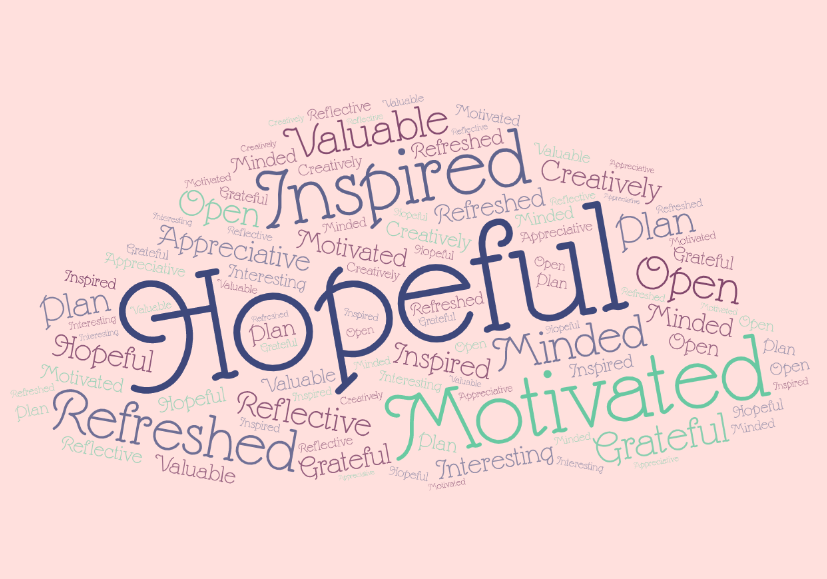
Inclusion & The Law- Myths & Realities (click to access resources)
Presenter: Pat Radel, Esq.
- Website: https://www.getnicklivingston.com/attorneys
- Pat's Blog: Appropriately Ambitious
- Pat's Email: pgradelesq@gmail.com
Key PPT slides with 10 myths [pdf]
Related Handouts/Resources

INCLUSIVE EDUCATION MEANS we no longer accept that separate classrooms, separate schools, and separate lives are in the best interest of any student. Separating people by ability disadvantages everyone. Belonging is a human need. Our educational system, practices, and spaces, need to be reimagined.
INCLUSIVE EDUCATION MEANS every student is valued because of their strengths, gifts, and even challenges. As disability is simply… diversity. Everyone benefits from meaningful participation and opportunities to learn grade level content with diverse peers. We must trust that all students come to us as incredible whole people who do not need to be fixed.
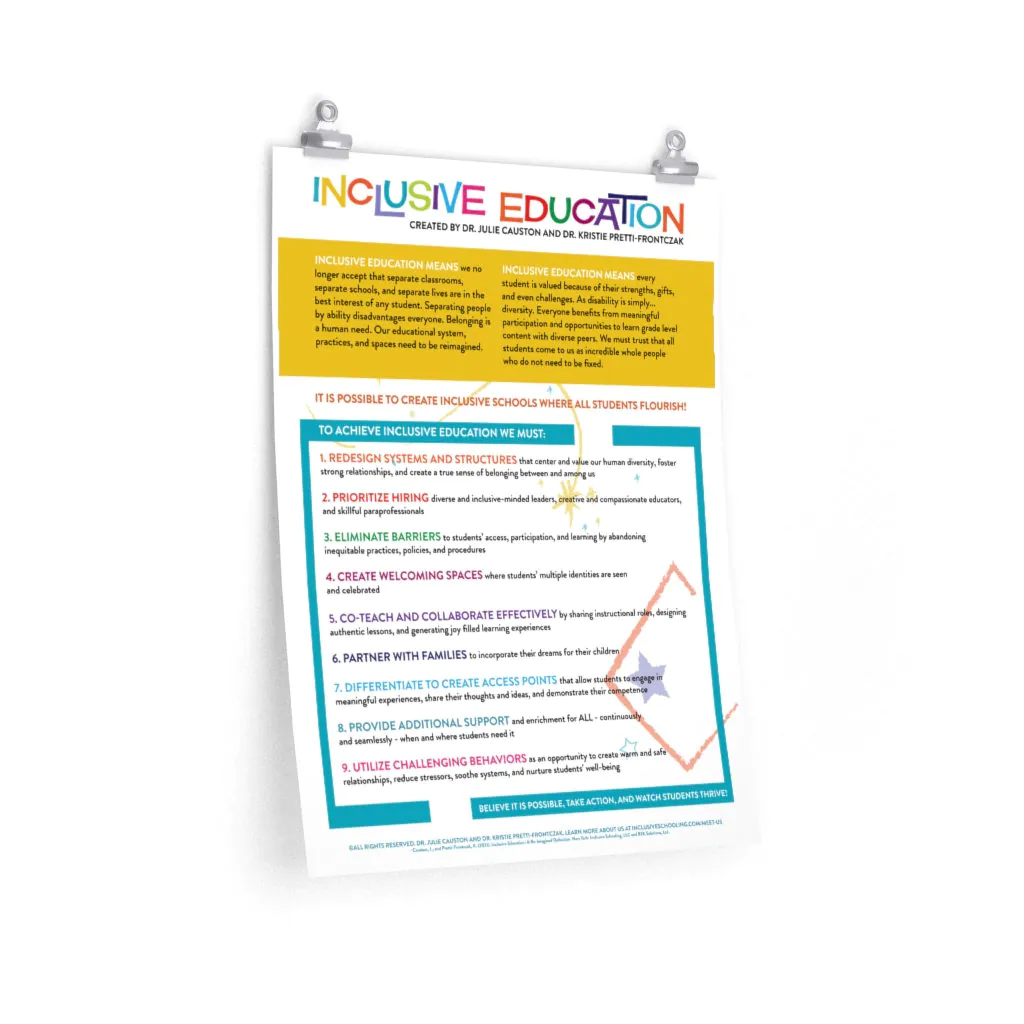
THE CIRCLE MAKER SERIES

FOLLOW US ON LINKEDIN
FOLLOW US ON FACEBOOK
